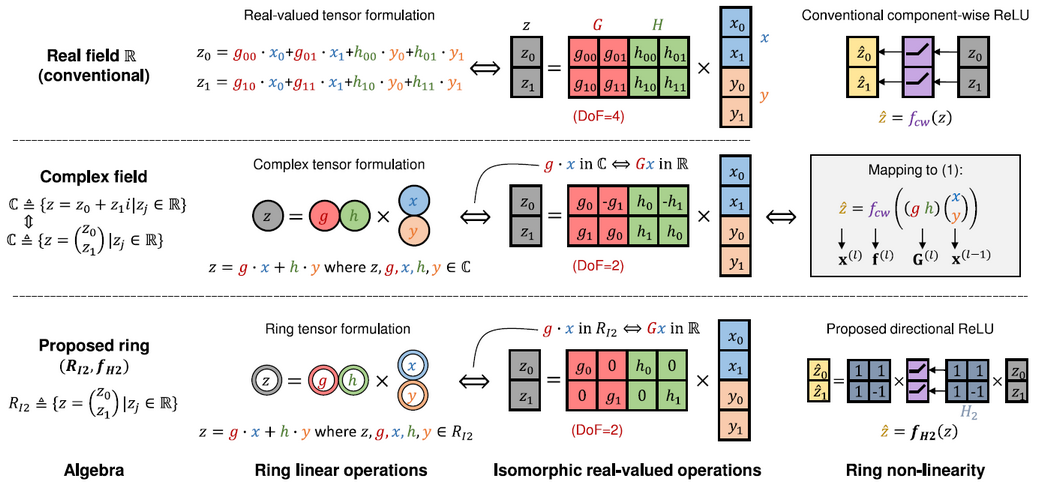RingCNN: Exploiting Algebraically-Sparse Ring Tensors for Energy-Efficient CNN-Based Computational Imaging
Department of Electrical Engineering
National Tsing Hua University, Taiwan, R.O.C.
 |
|
Abstract In the era of artificial intelligence, convolutional neural networks (CNNs) are emerging as a powerful technique for computational imaging. They have shown superior quality for reconstructing fine textures from badly-distorted images and have potential to bring next-generation cameras and displays to our daily life. However, CNNs demand intensive computing power for generating high-resolution videos and defy conventional sparsity techniques when rendering dense details. Therefore, finding new possibilities in regular sparsity is crucial to enable large-scale deployment of CNN-based computational imaging. In this paper, we consider a fundamental but yet well-explored approach—algebraic sparsity—for energy-efficient CNN acceleration. We propose to build CNN models based on ring algebra that defines multiplication, addition, and non-linearity for n-tuples properly. Then the essential sparsity will immediately follow, e.g. n-times reduction for the number of real-valued weights. We define and unify several variants of ring algebras into a modeling framework, RingCNN, and make comparisons in terms of image quality and hardware complexity. On top of that, we further devise a novel ring algebra which minimizes complexity with component-wise product and achieves the best quality using directional ReLU. Finally, we design an accelerator, eRingCNN, to accommodate to the proposed ring algebra, in particular with regular ring-convolution arrays for efficient inference and on-the-fly directional ReLU blocks for fixed-point computation. We implement two configurations, n=2 and 4 (50% and 75% sparsity), with 40 nm technology to support advanced denoising and super-resolution at up to 4K UHD 30 fps. Layout results show that they can deliver equivalent 41 TOPS using 3.76 W and 2.22 W, respectively. Compared to the real-valued counterpart, our ring convolution engines for n=2 achieve 2.00x energy efficiency and 2.08x area efficiency with similar or even better image quality. With n=4, the efficiency gains of energy and area are further increased to 3.84x and 3.77x with only 0.11 dB drop of peak signal-to-noise ratio (PSNR). The results show that RingCNN exhibits great architectural advantages for providing near-maximum hardware efficiencies and graceful quality degradation simultaneously. Publication C.-T. Huang,
"RingCNN: Exploiting Algebraically-Sparse Ring Tensors for
Energy-Efficient CNN-Based Computational Imaging," in ACM/IEEE
International Symposium on Computer Architecture (ISCA), 2021. [arXiv:2104.09056] ISCA Presentation (20 minutes)
|
Acknowledgement
This work was supported by the Ministry of Science and Technology, Taiwan, R.O.C., under Grant no. MOST 109-2218-E-007-034.
Last update on Jul 4, 2021